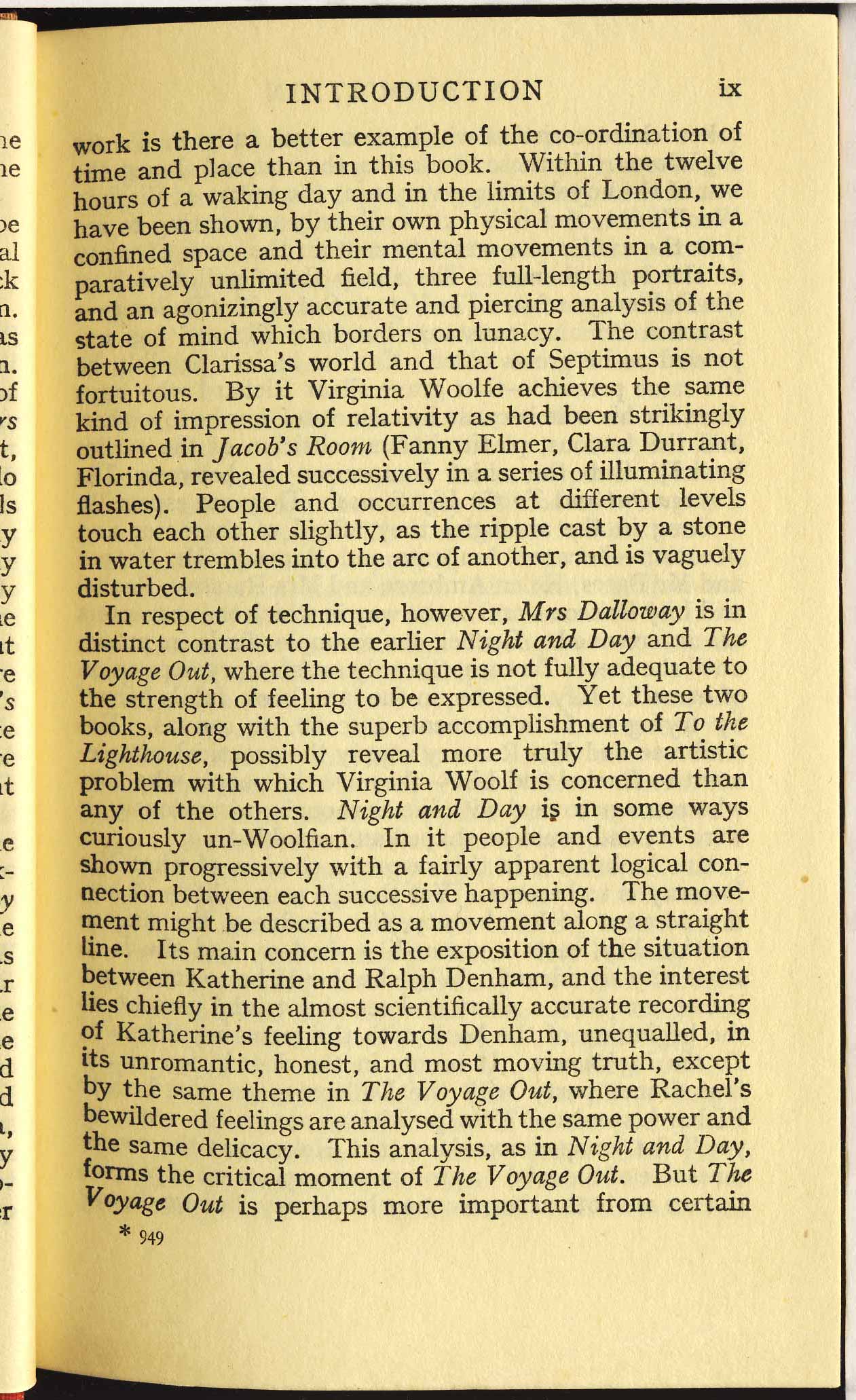
INTRODUCTION ixwork is there a better example of the co—ordination oftime and place than in this book. Within the twelvehours of a waking day and in the limits of London, wehave been shown, by their own physical movements in aconfined space and their mental movements in a com-paratively unlimited field, three full—length portraits,and an agonizingly accurate and piercing analysis of testate of mind which borders on lunacy. The contrastbetween Clarissa’s world and that of Septimus is notfortuitous. By it Virginia Woolfe achieves the samekind of impression of relativity as had been strikinglyoutlined in Jacob’s Room (Fanny Elmer, Clara Durrant,Florinda, revealed successively in a series of illuminatingflashes). People and occurrences at different levelstouch each other slightly, as the ripple cast by a stonewater trembles into the arc of another, and is vaguelydisturbed.In respect of technique, however, Mrs Dalloway is indistinct contrast to the earlier Night and Day and TheVoyage Out, where the technique is not fully adequate tothe strength of feeling to be expressed. Yet these twobooks, along with the superb accomplishment of To theLighthouse, possibly reveal more truly the artisticproblem with which Virginia Woolf is concerned thanany of the others. Night and Day is in some wayscuriously un-Woolfian. In it people and events areshown progressively with a fairly apparent logical con-nection between each successive happening. The movement might be described as a movement along a straightline. Its main concern is the exposition of the situationbetween Katherine and Ralph Denham, and the interestlies chiefly in the almost scientifically accurate recordingKatherine's feeling towards Denham, unequalled, inits unromantic, honest, and most moving truth, exceptby the same theme in The Voyage Out, where Rachel'sbewildered feelings are analysed with the same power andthe same delicacy. This analysis, as in Night and Day,forms the critical moment of The Voyage Out. But TheVoyage Out is perhaps more important from certain* 949









